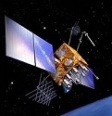Need for high throughput connectivity in defense drives satcom applications globally, says Frost & Sullivan
 A report released on November 26 by London-based market research firm Frost & Sullivan, entitled Analysis of the Global Military Satcom Applications Market, finds that the market earned revenues of $3.05 billion in 2013 and estimates this to reach $3.82 billion in 2022. The study covers manpack/handheld, ground vehicle mounted, air platform mounted, naval platform mounted and fixed military satcom (milsatcom) applications.
A report released on November 26 by London-based market research firm Frost & Sullivan, entitled Analysis of the Global Military Satcom Applications Market, finds that the market earned revenues of $3.05 billion in 2013 and estimates this to reach $3.82 billion in 2022. The study covers manpack/handheld, ground vehicle mounted, air platform mounted, naval platform mounted and fixed military satcom (milsatcom) applications.
The demand for high throughput milsatcom applications is growing as the use of unmanned aerial systems and implementation of command, control, communications, computers, intelligence, surveillance and reconnaissance of C4ISR systems increase. High throughput satcom applications can support imagery streaming and seamless connectivity across tactical and strategic networks – capabilities which have become vital in the military space, according to the report.
“To support milsatcom suppliers and service providers, governments and commercial operators are launching high throughput satellite systems, which are driving Ka band capacity,” said Frost & Sullivan aerospace & defense research analyst Arun Kumar Sampathkumar. “Currently, unused satellite spectrum capacity is delaying the migration to high throughput frequencies and hence lowering milsatcom hardware expenditures. Nonetheless, as military users migrate to Ka bandwidth and Internet protocol (IP)-based strategic military communication networks, spending on milsatcom will rise.”
Globally, spending is focused on upstream spectrum procurement. As a result, spending on hardware upgrades will go up in the coming decade and stimulate the use of milsatcom applications.
With the recent amendment to the United States Defense Authorization Act, which necessitates the adoption of a long-term strategy for commercial spectrum procurement, the market will continue expanding. Hardware manufacturers are looking to offer multi-band satcom terminals to meet the upgrade trend, while allowing users to operate across existing and upcoming capacities.
To win contracts globally, milsatcom suppliers should offer cost-effective solutions that enable defence forces to reduce their overall upstream and downstream expenditure. This will help hardware suppliers secure satellite capacities and promote their new age milsatcom capabilities as solutions rather than stand-alone hardware offerings.
“Strong opportunities for milsatcom suppliers will come from the Middle East and Asia-Pacific markets, where defense spending and cross-border security concerns are increasing,” pointed out Sampathkumar. “Suppliers must target these markets that have evolving milsatcom needs not entirely met by proprietary systems.”
SOURCE Frost & Sullivan








